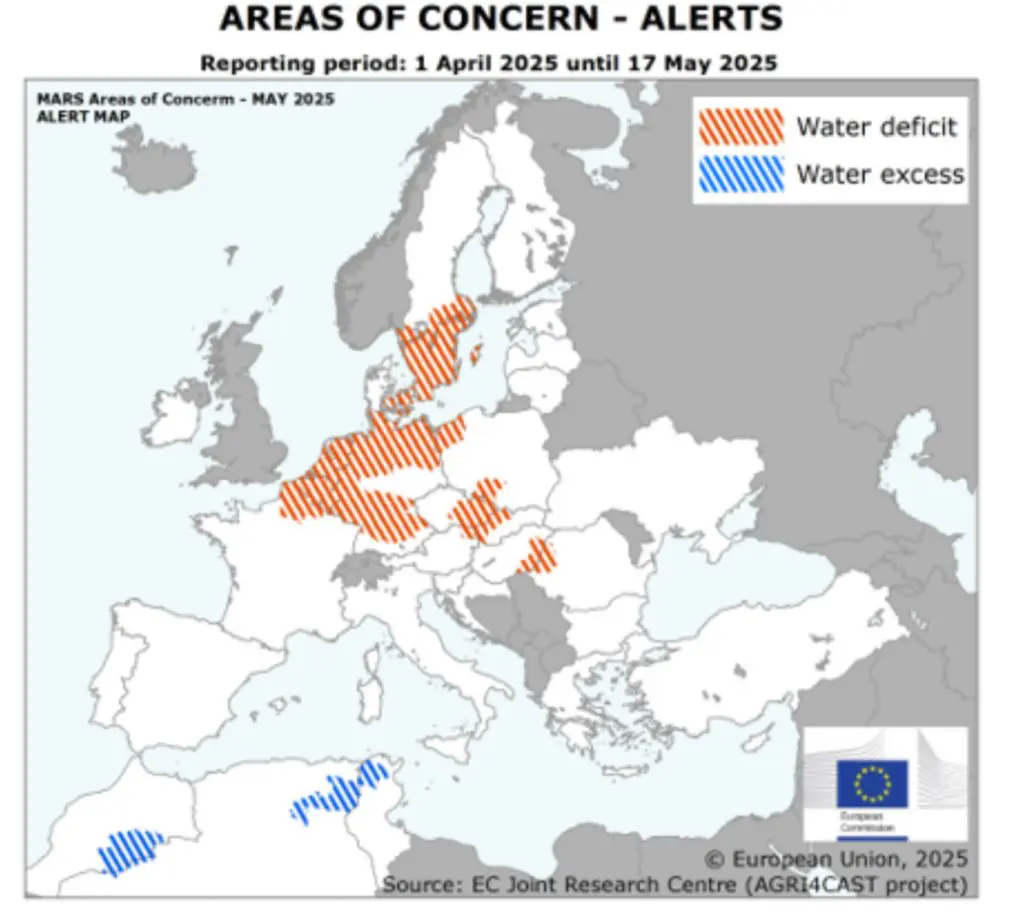
This spring, the European continent is suffering from extensive drought conditions that could have a significant impact on agricultural production this year. The European Union’s Copernicus climate monitoring service analyzes drought risk within the European Union’s 27 countries plus the United Kingdom (excluding the Canary Islands, the Azores and Madeira). By the latest data of the year, including analysis of the first 10 days of May, 35.5% of the EU-27+UK is in drought warning conditions, while 0.6% is in drought alert conditions. These drought conditions encompass nearly all of Northern Europe with the exception of parts of Scandinavia and the Baltics. This year’s lack of rainfall is in stark contrast to last year’s wetter-than-average spring.

Conditions are especially poor in the UK, Belgium, the Netherlands and Northern Germany. One German farmer in Saxony-Anhalt reported that his farm received roughly half of the seasonal rainfall he had predicted it would by mid-May. Another German farmer said that even if rainfall arrives soon, he estimates 20-30% of his yearly crop is already lost. Each year, 6% of European total food production is lost to extreme weather, amounting to €28.3 billion worth of livestock and agricultural crops. The European Investment Bank estimates only around 25% of these losses are insured, meaning over €20 billion of uninsured yearly losses in the agricultural sector. With an ongoing drought in Europe right now, 2025 could shape up to be a year with even worse economic loss.
Other parts of Europe were spared the current drought conditions thanks to a rainy winter. Most of Spain, Italy, Switzerland and France had average or wetter than normal conditions in the months leading up to spring, as the image below depicts. In Spain, the wet winter meant many extreme weather events including deadly flooding. While certain parts of Europe may have been spared a lack of rainfall, most of Europe experienced temperatures significantly above normal this past winter. In Eastern Europe, the Alps and northern Scandinavia, average mean winter temperatures were more than 3°C above normal, with a knock-on effect for drying out soil moisture. Ultimately, the only possible relief is rainfall, and rainfall that cannot come soon enough for the continent.

Despite the risks to crop conditions in Northern Europe, the European Union expects that total agricultural yield expectations across the EU should be fair this year. Thanks to cool nights and moderate daytime temperatures, the worst possible drought scenarios may have been avoided. There is also a degree of averaging out crop yields that minimizes the impact of the drought, as yields in Spain and Portugal are expected to be 20% above average this year. While this does bring a degree of comfort to the economy of the continent, sparing Europe from inflationary pressures on food and agricultural byproducts, it comes as no relief to those farmers whose farms are suffering the brunt of the impact of the drought.



























